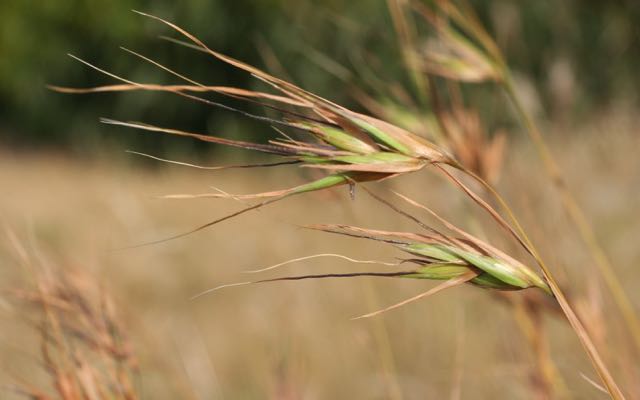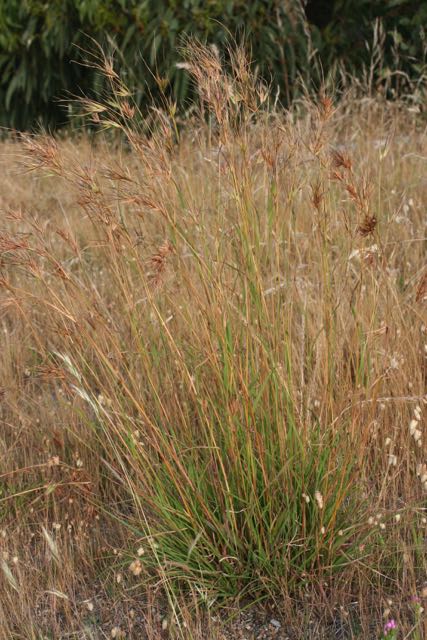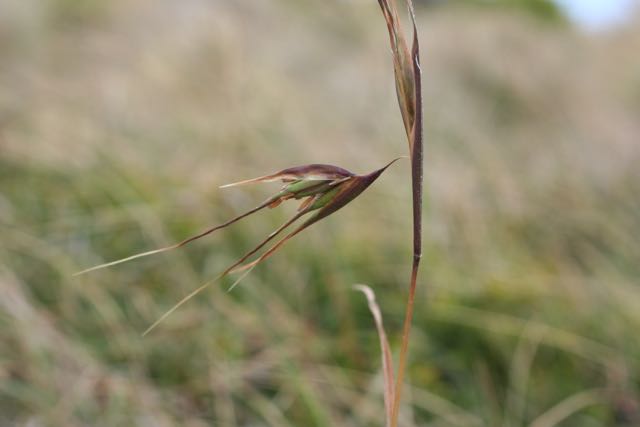



Kangaroo Grass is a perennial tussock grass up to 60cm in size and toward a metre in height when flowering. It forms an important part of the cliff top grassland at Jan Juc as it is the dominant native grass species across most of it. Its growing period is through the warmer months with flower spikes produced in late spring and mature seed heads in mid January. Rainfall in summer can prolong flowering and seed production. Dormancy occurs with the onset of cold weather through autumn-winter.
In pre-european times aboriginal people regularly burnt grasslands to encourage grazing by herbivores. This encouraged many inter-tussock wildflowers to grow between the tussocks creating an extraordinary wildflower display through the spring period. Unfortunately, much of Victoria's grasslands have disappeared due to introduced weeds and urban and agricultural modification. Groups like Jan Juc Coast Action are painstakingly trying to restore native grassland ecology as well as learn new grassland maintenance techniques.
Leaves are floppy in appearance; often sparsely hairy and generally bright green in their growing period becoming various shades of red as they move toward dormancy or in response to low rainfall.
Seed heads are large and chunky. Seeds are attached to long awns that assist the seed in burrowing into the soil by actively twisting in a circular motion in response to rainfall.
Indigenous uses as provided by the Wathaurung Aboriginal Corporation: Seed can be ground to make flour.
Both sides of the leaf are one colour